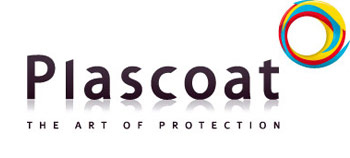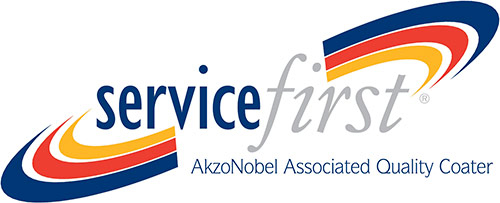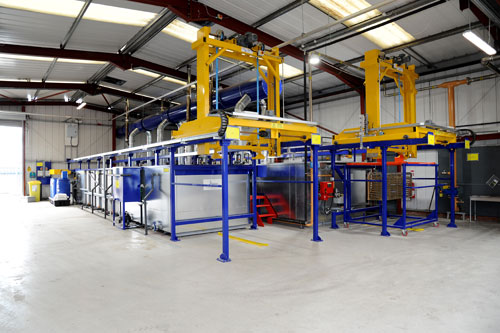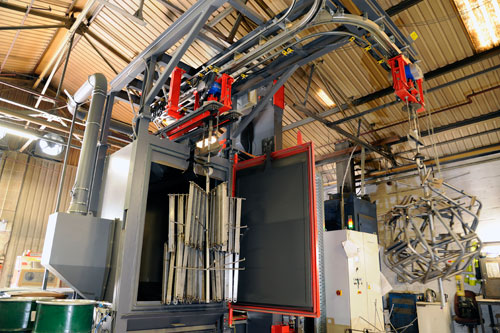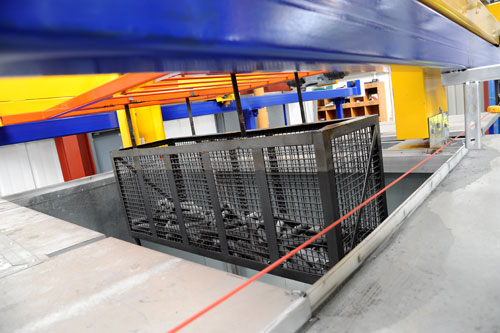
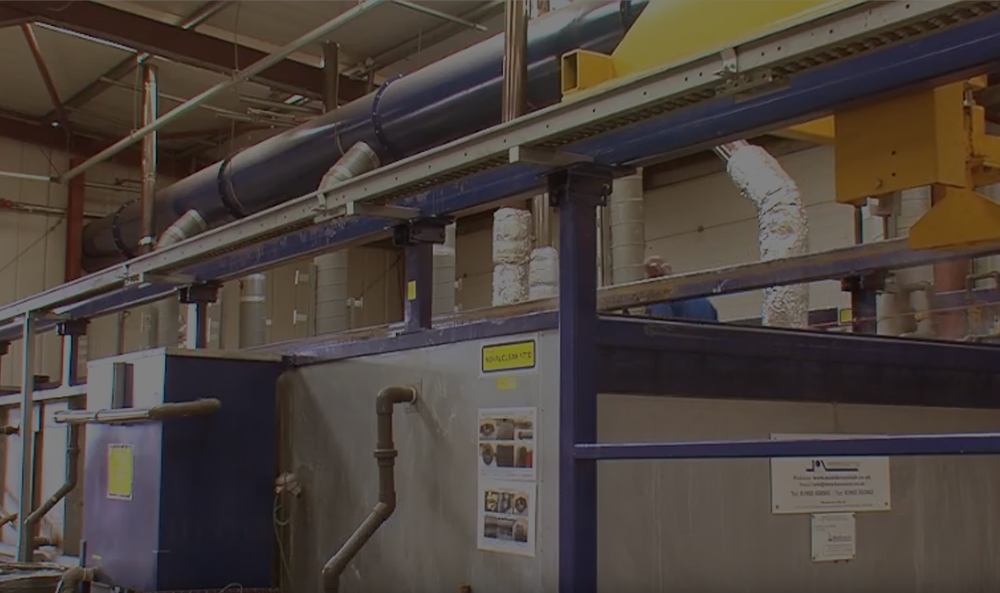
Coating performance.
Any coating is only as good as its pre-treatment. The key to coating performance, whether it's corrosion resistance, chemical resistance, coating adhesion etc is to have a properly applied coating over a suitable combination of pre-treatments – Consider this a 'coating system' rather than just a coating.
Proper definition and specification of a 'coating system' gives assurance of coating performance and ensures that the performance is achieved at a cost appropriate to the product and the customer.
Depending upon what you need your coating system to achieve, Pre-treatment will have several stages:
Stripping
If there is an old paint or coating on components, it is critical that this is removed, fully, properly and safely. If a new coating is applied to anything other than a clean and properly prepared surface (i.e. on top of old paint) it’s performance will only be as good as whatever it sits on top of.
We have facilities to remove some old paints and coatings, this can help with jobs where refurbishment is required. Ensuring old coatings are properly removed is an important stage.
Degreasing
Removal of greases and oils used in the manufacturing processes. Any grease or oil on the surface of a component will cause problems further down the line. It will prevent subsequent treatments from being effective and will potentially create cosmetic and performance problems in the finished coating film.
Degreasing is the bare minimum treatment for any job and is carried out on every job that we process. We have lots of options for degreasing, including various chemicals, various Alkali washes, various Acidic Washes and Thermal degreasing.
Blasting
Often a blasting process will be specified to aid coating film adhesion. This works by using a blasting 'media' to alter and increase the surface profile of the substrate on a microscopic scale. By increasing the surface profile we give the primers, undercoats and coatings more surface area to stick to.
Blasting processes include, Steel Grit Blast, Aluminium Oxide Gritblast, Sand Blast and many other blasting media.
Shotpeening
The purpose of the shotpeen operation is to create a compressive stress in the surface of a component, thus strengthen it and relieve tensile stresses that may be introduced within the manufacturing process. Microcracks can appear in the surface of parts that have tensile stresses at the surface, such cracks do not propagate in a material that is under a compressive stress.
Depending on the part geometry, part material, shot material, shot quality, shot intensity, and shot coverage, shot peening can increase fatigue life up to 1000%. PCL use the Almen Arc method of measurement for validating the process. The process is typically used on springs and bracketry to increase product life.
Phosphating
Phosphate conversion coating is a key element in a coating system where corrosion resistance is required. The process works by laying down a very thin sacrificial coating on to the substrate. Should the coating film be damaged at a later date, this sacrificial layer prevents corrosion (which starts at the point of damage) from spreading under the coating film and causing the coating to flake off.
Depending upon how much corrosion resistance is required (i.e. how extreme is the environment in which the coating will be used?) we can offer Iron Phosphate, Zinc Phosphate or Tri-Cationic Phosphate.
De-embrittlement
Components with a high level of hardness can be prone to hydrogen embrittlement. When components are processed through acidic processes, such as phosphate, hydrogen can be introduced into the substrate. This hydrogen causes the substrate to lose its ductility and therefore become brittle. This brittleness can cause premature component failure, by de-embrittling components that are at risk we remove the dangerous hydrogen and therefore the risk of premature failure of components.
Primers
Primers are used to aid chemical adhesion between the coating film and substrate. They are ideal where a component is not suited to blasting or where a coating film has no real adhesive properties of its own.
There is a whole array of primers available depending upon the substrate and the coating film, our sales team will automatically inform you if a primer is recommended within the system that meets the needs of your product.
Undercoats
Similar to primers and often having their own pre-treatment requirements. A common undercoat would be Electrophoretic Paint or E-coat (Ecoat). Undercoats are generally a functional coating that offer protection on their own but alone would not be suited to most applications. For example they may not be UV resistant, scratch resistant, impact resistant or simply they may not be cosmetically attractive (limited colour range, poor appearance).
Benefits Of Using PCL
Often a finishing supplier will sub-contract the pre-treatment processes and in doing so select a supplier that the customer will have no influence over, this can affect quality, cost and delivery.
Plastic Coatings Ltd are able to offer all of these treatments and more as in-house services, under our control and therefore can tailor a process to suit your technical requirements whilst providing a cost effective solution and ensuring tight lead times are met.
Need a quote for an upcoming project?
Call or email us for a free quote.
-
- Customer approvals





-
- Other approvals
